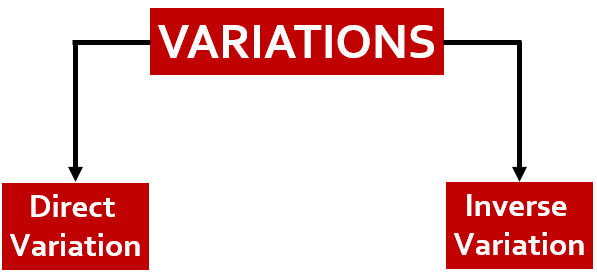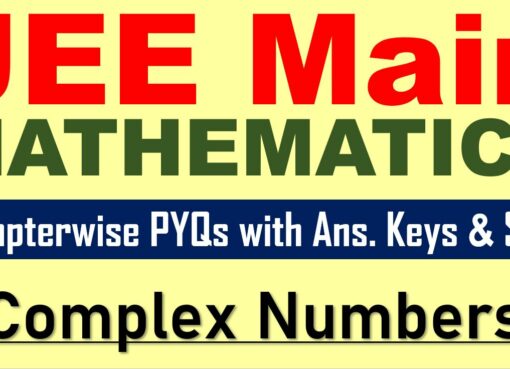DIRECT AND INVERSE PROPORTION SHORT NOTES AND IMPORTANT QUESTIONS
Hi students, welcome to Amans Maths Blogs (AMB). On this page, you will get the short notes and important question of CBSE Class 8 Chapter 13 Direct and Inverse Proportion.
Read : Square & Square Roots
These short notes and important questions are taken from the NCERT text books and other books. If you want to get the NCERT Solution for class 8 Maths Direct and Inverse Proportion Chapter, then click here.
If you need sample questions based on direct and inverse proportion for practice, then you are at right place.
Read : Cubes & Cube Roots
Direct and Inverse Proportions Short Notes
If the values of two quantities depend on each other in such a way that a change in one result in a corresponding change in other, then the two quantities are called in variations. There are two types of variations as below.

Direct Variations
If two quantities are related in such a way that if an increase in one quantity produces a proportional increase in other quantity or if decrease in one quantity produces a proportional decrease in other quantity, then the two quantities are known as DIRECT VARIATIONS.
For example:
If we need to buy more pens, then we require more money to buy the pens. Here, the number of pens and cost of money are in direct variation.
If a school has more number of students, then the school is required more number of teachers to teach the students. Here, the number of students and the number of teachers are in direct variations.
If we need to travel less distance, then we require less time taken to complete the journey. Here, the the distance and the time taken are in direct variation.
If we need to less number of books, then we require less money to buy the books. Here, the number of books and the money are in direct variation.
Thus, if two quantities x and y are in direct variations, then x/y is constant. It means, x is proportional to y. x = ky
x/y = k (constant).
In such a case, if y1 and y2 are two values of y corresponding to the values of x1 and x2 of x respectively, then . Similarly,
.
Indirect Variations
If two quantities are related in such a way that if an increase in one quantity produces a proportional decrease in other quantity or if decrease in one quantity produces a proportional increase in other quantity, then the two quantities are known as INDIRECT VARIATIONS.
For example:
If we have more number of workers, then less time to complete the work. Here, the number of workers and time taken are in inverse variation.
If a car has more speed, then it takes less time to travel Here, the speed of the car and the time taken are in inverse variations.
If we need to complete a work in less time, then we require more number of employee to complete the task. Here, the the time taken to complete the work and the number of employees are in inverse variation.
Thus, if two quantities x and y are in inverse variations, then xy is constant. It means, x is proportional to 1/y. x = k/y
xy = k (constant).
In such a case, if y1 and y2 are two values of y corresponding to the values of x1 and x2 of x respectively, then x1y1 = x2y2. Similarly, x1y1 = x2y2 = x3y3…
Direct and Inverse Proportions Important Questions
Direct and Inverse Proportion Important Question No 1:
A worker is paid Rs 2000 for 8 days work. If he works for 20 days, how much will he paid?
Answer: Rs 5000
Direct and Inverse Proportion Important Question No 2:
Sanjay bought 12 registers for Rs 156. Find the cost of 8 registers.
Read : Linear Equations in One Variable
Answer: Rs 104
Direct and Inverse Proportion Important Question No 3:
If 36 men can do a piece of work in 25 days, then in how many days will 15 men complete it?
Answer: 60 Days
Direct and Inverse Proportion Important Question No 4:
A jeep finishes a journey in 9 hours at a speed of 60 km/h. By how much should its speed be increased so that it may take only 6 hours to finish the same journey?
Answer: 30 km/h
Direct and Inverse Proportion Important Question No 5:
An overhead tank has two taps. One is working as inlet and other as an outlet. If the tank can be filled in 3 hours by the inlet tap and it can be finished by the outlet tap in 4 hours, then find the time required to fill the tank if both the taps are opened simultaneously.
Answer: 12 hours
Direct and Inverse Proportion Important Question No 6:
45 cows graze a field in 13 days. how many cows will graze the same filed in 9 days?
Answer: 65 days
Direct and Inverse Proportion Important Question No 7:
A contractor employed 210 men to build a house in 60 days. After 12 days, he was joined by 70 more man. In how many days will the remaining work be finished?
Answer: 36 days
Direct and Inverse Proportion Important Question No 8:
Sudha cycles to her school at an average speed of 12 km/h. It takes her 20 minutes to reach the school. If she wants to reach her school in 15 minutes, what should be her average speed?
Answer: 16 km/h
Direct and Inverse Proportion Important Question No 9:
Two pipes A and B can fill a tank in 36 hours and 45 hours respectively. If both the pipes are opened simultaneously, how much time will be taken to fill the tank?
Answer: 20 hours
Direct and Inverse Proportion Important Question No 10:
A and B undertake to due to do a piece of work for Rs 600. A alone can do it in 6 days while B alone can do it in 8 days with the help of C, they finish it in 3 days. Find the share of each.
Answer: Rs. 300, Rs. 225, Rs. 75
Direct and Inverse Proportion Important Question No 11:
What number must be added to each of the numbers 6, 15, 20 and 43 to make four numbers proportional?
Answer: 3
Direct and Inverse Proportion Important Question No 12:
If A : B = 3 : 4, B : C = 7 : 9, find A : B : C.
Answer: 21 : 28 : 36
Direct and Inverse Proportion Important Question No 13:
If x varies directly as y and inversely as z and if x = a, y = b and z = c. Find x when y = b2 and z = c2.
Answer: ab/c
Direct and Inverse Proportion Important Question No 14:
If z varies as px + y and if z = 3 when x = 1 and y = 2 and z = 5, when x = 2 and y = 3, find p.
Answer: 1
Direct and Inverse Proportion Important Question No 15:
P and Q together can complete a job in 8 days and 16 days respectively. They work on alternate days with Q starting the job. In how many days will the job be completed?
Answer: 11 days
Direct and Inverse Proportion Important Question No 16:
A mixture containing alcohol and water in the ratio 3 : 2. If 4 lt of water is added to the mixture the ratio becomes 3 : 4. Find the quantity of water in the given mixture.
Answer: 4 litres
Direct and Inverse Proportion Important Question No 17:
If 30 men working 7 hours a day can do a piece of work in 18 days. In how many days will 21 men working 8 hours a day, do the same work?
Answer: 22.5 days
Direct and Inverse Proportion Important Question No 18:
10 students can do a job in 8 days, but on the starting day, 2 of them informed that they are not coming. By what fraction the number of days required for whole work will change?
Answer: 1/4
Direct and Inverse Proportion Important Question No 19:
If the work done by (x – 1) men in (x + 1) days is to the work done by (x + 2) men in (x – 1) days is in the ratio of 9 : 10. Find x.
Answer: 8
Direct and Inverse Proportion Important Question No 20:
What number must be added to each of the numbers 10, 18, 22, 38 to get the numbers which are in proportion?
Answer: 2
Direct and Inverse Proportion Important Question No 21:
Sharad covers two-third of a certain distance at 4 km/h and remaining at 5 km/h. If he takes 42 minutes in all, then what is the total distance?
Answer: 3 km
Direct and Inverse Proportion Important Question No 22:
Sheetal has enough money to buy 75 machines worth Rs 200 each. How many machine can she buy if she gets a discount of Rs. 50 on each machine?
Answer: 100 machine
Direct and Inverse Proportion Important Question No 23:
A job can be completed by P in 15 days and by Q in 10 days. If they work on alternate days starting with P. In how many days will the job be completed?
Answer: 12 days
Direct and Inverse Proportion Important Question No 24:
If 12 boys earn Rs 840 in 7 days, what will 15 days earn in 6 days?
Answer: Rs 900
Direct and Inverse Proportion Important Question No 25:
In a hostel of 50 girls, there are food provision for 40 days. If 30 more girls join the hostel, how will these provision last?
Answer: 25 Days
Direct and Inverse Proportion Important Question No 26.
A and B together can do a task in t hours. A and B individually can complete the task in (t + 2) hours and (t + 18) hours respectively. Find t.
Answer: 6 hours
Direct and Inverse Proportion Important Question No 27.
A can do a piece of work in 25 days and b can finish it in 20 days. They work together for 5 days and then A goes away. In how many days will B finish the remaining work?
Answer: 11 days
Direct and Inverse Proportion Important Question No 28.
An employer reduces the number of employees in the ratio of 15 : 8 and increases their wages in the ratio 14 : 25. In what ratio, the wages bill is increased or decreased?
Answer: 21 : 20
Direct and Inverse Proportion Important Question No 29.
A and B can do a piece of work in 10 days, B and C in 15 days, C and A in 12 days. How long would A and B take separately to do the same work?
Answer: 17(1/7) days, 24 days
Direct and Inverse Proportion Important Question No 30.
A contractor undertakes to construct a road in 20 days and engages 12 workers. After 16 days, he find that 2/3 part of the work has been done. How many more workers should be now engage in order to finish the job in time?
Answer: 12 workers
Direct and Inverse Proportion Important Question No 31.
Three taps A, B, C can fill a tank in 10 minutes, 15 minutes and 20 minutes respectively. If the taps were shut off after 5 minutes, what is the volume of water that overflowed (in %).
Answer: 8(1/3) %
Direct and Inverse Proportion Important Question No 32.
8 men or 12 boys can do a piece of work in 25 days. In how many days can 6 men and 11 boys complete the work?
Answer: 15
Direct and Inverse Proportion Important Question No 33.
6 men and 9 women can do a piece of work in 4 days. 4 men and 5 women can do it in 8 days. In how many days can 20 men and 6 women do the same work?
Answer: 3
Direct and Inverse Proportion Important Question No 34.
If Px/(b – c) = Qy/(c – a) = Rz/(a – b), then find the value of Pax + Qby + Rcz?
Answer: 0
Direct and Inverse Proportion Important Question No 35.
If x + y + z = 0 and (x3 + y3)/xyz = (y3 + z3)/xyz = (z3 + y3)/xyz = a, then find the value of a
Answer: 2
Direct and Inverse Proportion Important Question No 36.
90 men can dig a well in 2 days after they have worked for 5 days. How many more men should be employed so that to complete the work in another 10 days?
Answer: 45
Direct and Inverse Proportions Important Question No 37.
In a school, the maximum strength of each class is 60. In class, then total number of students is a multiple of 5. On a certain day, 4 boys were absent and the ratio of the numbers of the remaining boys to that of the girls was 5 : 4. Find the ratio of total boys to that of girls.
Answer: 3 : 2
Direct and Inverse Proportions Important Question No 38.
In a test, Rakesh got 50% marks and scored 10 marks more than the pass mark. In the same test, Suresh got 55% marks and scored 20 marks more than pass mark. Find the pass mark.
Answer: 90
Direct and Inverse Proportions Important Question No 39.
A person leaves his house and travel at 4 km/h reaches his office in 10 minutes later. Had he traveled at 6 km/h, he would have reached 20 minutes early. Find the distance from his house to the office.
Answer: 6 m
Direct and Inverse Proportions Important Question No 40.
How long will a train 100 m long and traveling at a speed of 45 km/h take to cross a platform of length 150 m?
Answer: 20 sec


